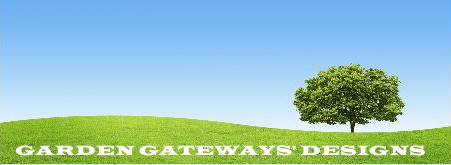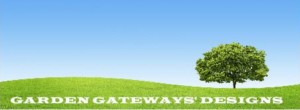
Presents
Theme Gardens
English Gardens Design Elements



With English garden designs, use recognizable English horticultural and garden accent selections. Place them in appropriate formal, estate, natural, country or city garden displays.
The classical Renaissance garden reached its high glory in Italy, than emerged in France before finally coming to England. Although England was a relative latecomer to the classic garden form, she quickly became known as a major leader in the world of gardening. The English not only devote enormous time and effort to create some of the most beautiful landscapes in the world, they have defined a great deal of the landscape art to the world. Not only are they famous for exporting English gardens to all corners of the globe during their colonial expansionist period, they imported various garden techniques from foreign countries and made them part of the English gardening experience. There are probably more famous landscape architects and designers from England than from any other country. If a client desires to introduce an English garden as their major theme, they are first going to have to decide just “which” style of English garden. The English garden landscape architecture might have highly focused, clear and strong garden bed foundations, trimmed background hedges, parterres, classical statuary and accents.
Or perhaps you could select a more relaxed “natural” landscape, which has a tendency to be more eclectic in its nature. You could choose a traditional urban garden with perennial and annual garden borders or create the famous “cottage garden” which almost seems to have been invented by the English. There are all manner of style techniques in addition to the foregoing descriptions. Perhaps because the English have been so influential and far ranging in landscape design, it can be somewhat difficult to isolate those primary plant selections and accents that will make the garden “English”. The English love trimmed yew hedge mazes, and topiaries. British allotment gardens are popular and are generally described as small plot gardens where a group of families will create and maintain small gardens together, to grow fruits and vegetables for their own use. Croquet and cricket playing fields are also very British elements in English gardens landscape architecture. Some typical structures found in English gardens are gazebos, greenhouses, arbors and trellises. There are plenty of well-known furniture pieces and accents such as the Chippendale and Lutyens benches that will work quite well, but because they are extensively used around the world, they will not necessarily be connected with the English. Some other identifiable symbols could be Celtic knot-works, Tudor roses and egg & dart design decor.




Therefore after selecting the appropriate English garden designs for the client and site that established one of the English garden perceptions, choose garden accents that are not ambiguous to the English experience. You could select large stone sculptures that depict English royal figures or animals often used in England such as the lion or even heraldry icons. Some favorite flowers in an English garden are roses, iris, violets, pinks, lily of the valley, primrose, columbine, bellflower, hollyhocks, peonies, calendula and crocus. Make visits to antique stores that often carry very good English garden objects. Scour photographs and magazines of classical and modern day English gardens and dissect them to determine those elements that make the design what it is.
If the landscape design professional is attempting to create an important “top of the mark” cultural garden where serious scrutiny by observers is expected, it is advisable to consult with an expert in that garden design specialization.
Photo Palette Offerings
(Obviously, only a small sampling of related garden elements can reasonably be displayed, but the viewer should be able to use these as a springboard to develop their own design palette.)
English Gardens Decorative Elements
English Garden Scenes
English Hardscape Elements
English Plants

























































































































